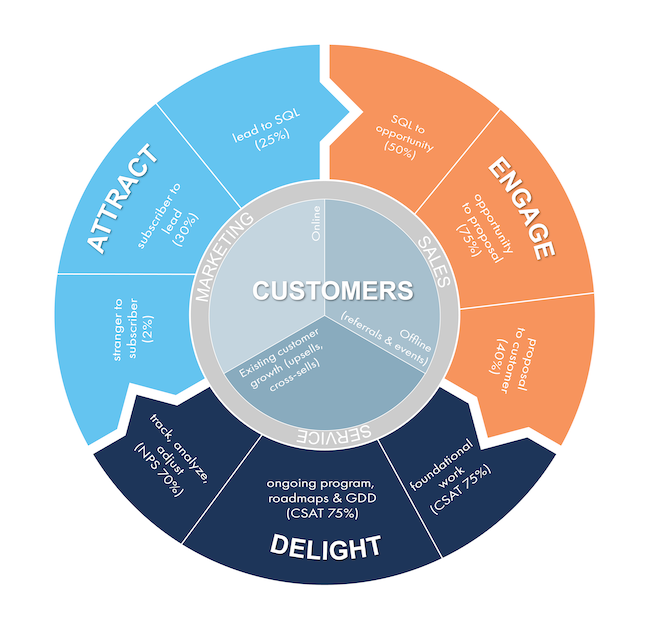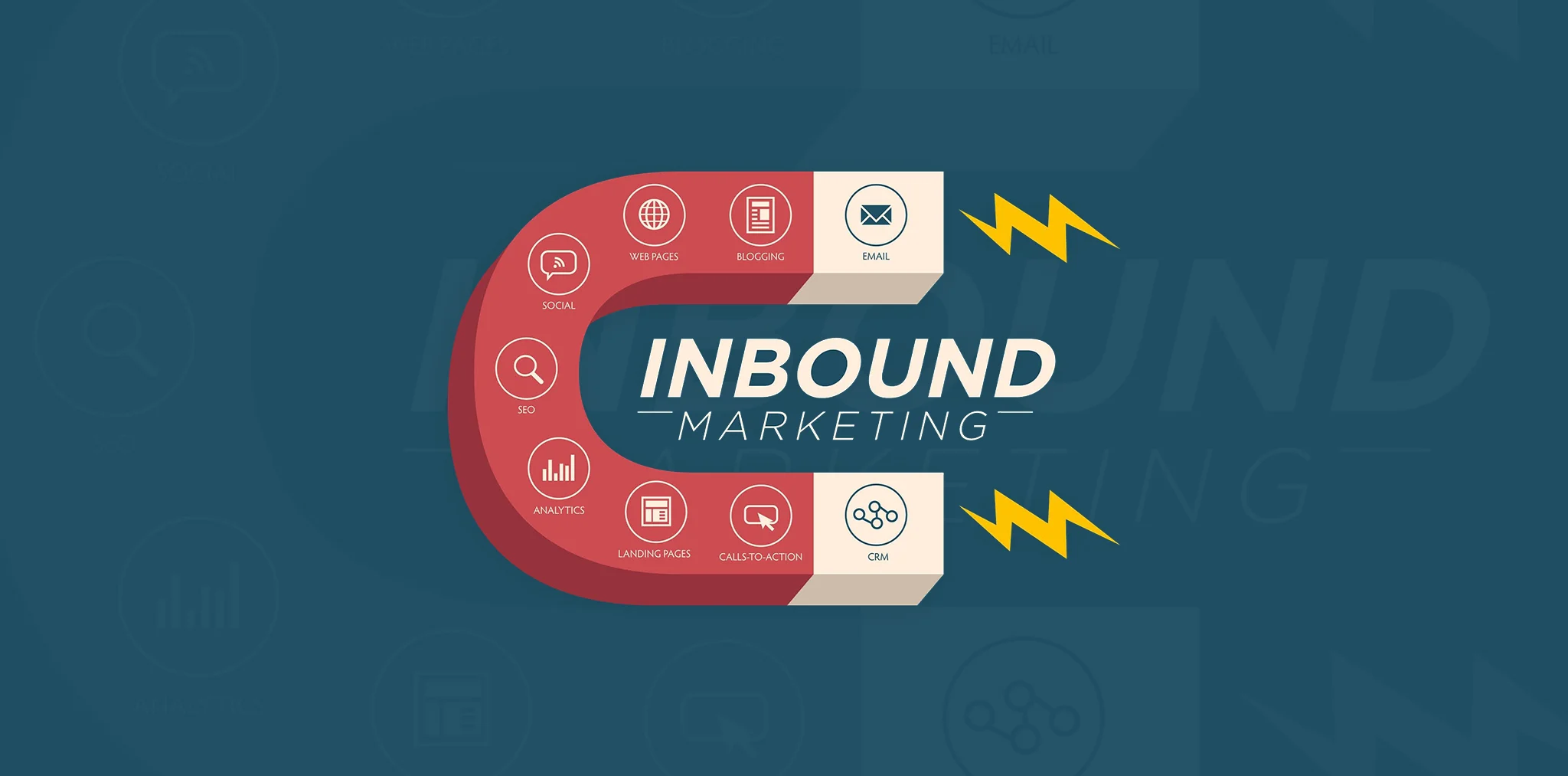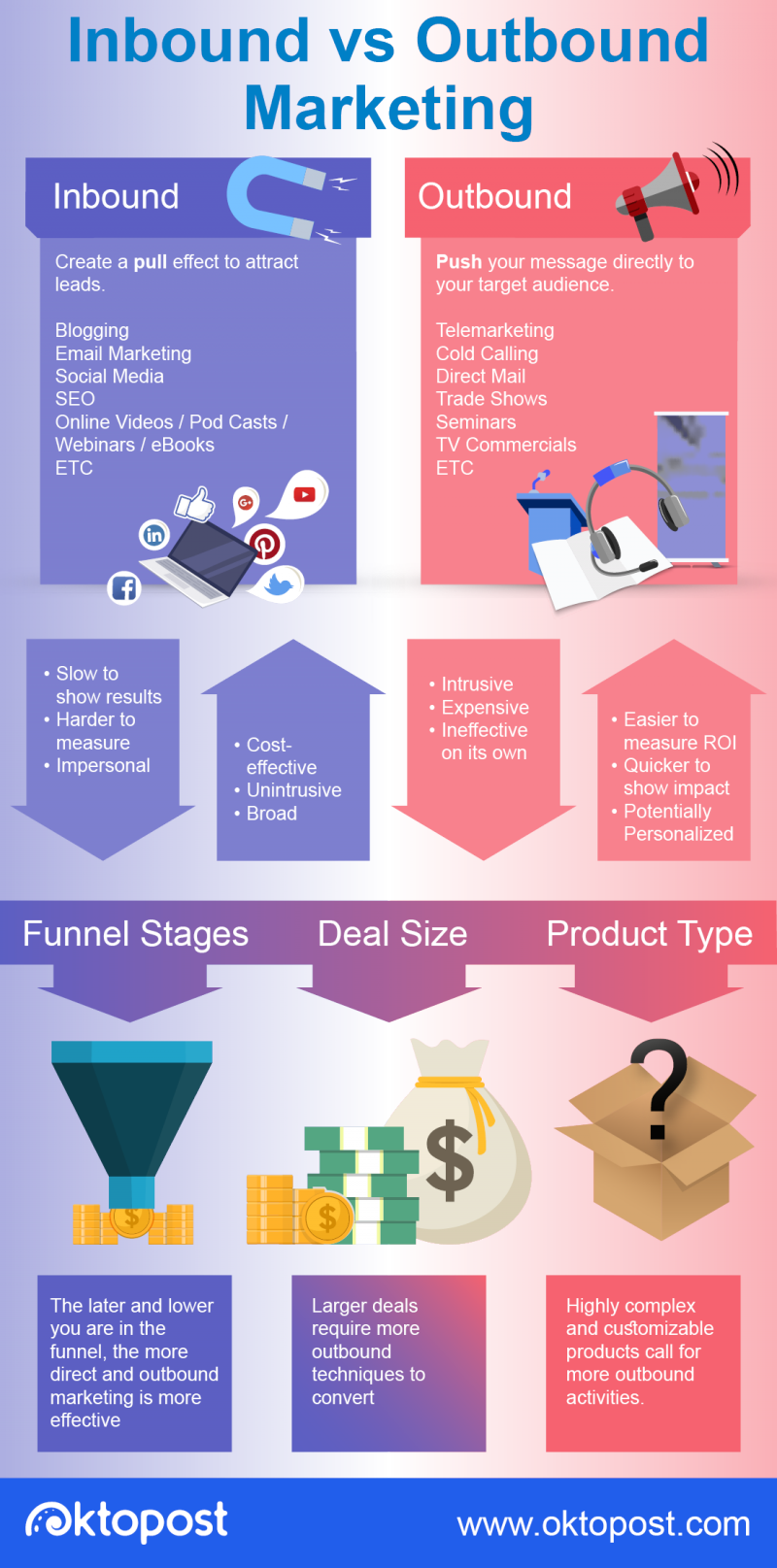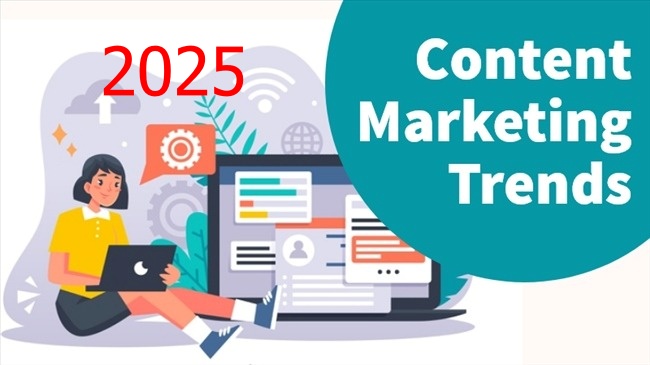Inbound Marketing is an increasingly popular marketing strategy that helps businesses attract customers through valuable content and positive experiences. In the modern context, when consumers are becoming smarter and have rich knowledge about products and services, inbound marketing is not just a term but has become an essential part of the development journey of any brand.
What is Inbound Marketing?
To understand inbound marketing, it is necessary to analyze the basic concepts related to it.
Definition of Inbound Marketing
Inbound marketing is a method of reaching customers without having to use traditional advertising strategies, such as television or newspaper advertising. Instead of waiting for customers to come to you, inbound marketing proactively creates engaging and useful content to attract their attention.
This content can include blog posts, videos, eBooks, podcasts, and more. The goal is to build relationships with customers and create value for them. When customers feel supported and informed, they will naturally choose your brand when making purchasing decisions.
The Key Components of Inbound Marketing

Inbound marketing consists of three main components: attract, engage, and delight.
- Attract: This is the first stage where you need to create quality content to attract your target audience. SEO tools, social media, and blogs are often used at this stage.
- Engagement: Once customers have gotten to know you, the next step is to create positive experiences for them. This can be achieved by providing useful information, answering questions, and solving problems that customers are having.
- Delight: The final stage is customer retention. Providing good customer service and maintaining relationships with existing customers increases the likelihood that they will return and refer you to others.
Why is Inbound Marketing important?
In today’s digital age, consumers have lost patience with annoying advertisements. They want to find information easily and quickly. Therefore, inbound marketing becomes an optimal solution, helping businesses build trust and build long-term relationships with customers.
Benefits of Inbound Marketing
Inbound marketing brings many benefits to businesses, from optimizing costs to improving conversion rates.
Save Advertising Costs
One of the biggest benefits of inbound marketing is the cost savings. Unlike outbound marketing, where you have to spend money on traditional advertising channels, inbound marketing allows you to leverage your content to attract customers without spending too much money.
By creating quality content and optimizing for SEO, businesses can reach a large audience without having to spend a large amount of money on advertising. This is especially important for small and medium-sized businesses, where finances are often limited.
Increase Conversion
When you create content that is relevant to your customers’ needs, your chances of converting them into customers increase significantly. Compelling content not only attracts customers, but also helps them better understand your product or service, making it easier for them to make a purchase decision.
Furthermore, providing valuable information also helps build your brand’s credibility. When customers feel confident in your brand, they are more likely to return again in the future.
Improve Customer Experience
Inbound marketing focuses on creating the best possible customer experience. By providing useful information and proactive communication, businesses can gain a deeper understanding of their customers’ needs and desires.
This not only improves the shopping experience but also creates a lasting relationship between the customer and the brand. Customer satisfaction will lead to them being willing to share their positive experience with others, helping to expand the market for the business.
Steps to Implement Inbound Marketing
Implementing an effective inbound marketing strategy is no easy task. Here are some steps to take.

Market research and analysis
Before you start any activity, it is important to do market research. You need to identify your target audience, the problems they face, and how your product or service can help them.
Tools like Google Analytics and online surveys can help you collect data about your customers’ behavior. Knowing this information will help you create relevant content that will attract and engage your customers.
Building a Content Strategy
Content is king in inbound marketing. A clear content strategy will help you shape the plan and direction for the entire campaign.
You should determine the type of content you will create, such as blog posts, videos, infographics, or ebooks. You should also determine a publishing schedule to ensure that the content is fresh and meets the needs of your customers.
SEO Optimization
SEO is an integral part of inbound marketing. To get your content to show up in search engines, you need to optimize your articles for keywords, titles, and descriptions.
Using tools like Google Keyword Planner will help you find keywords relevant to your industry. Note that optimization not only helps you rank better, but also helps you attract the right audience.
Effective Inbound Marketing Support Tools
There are many inbound marketing tools available to help you manage and optimize your marketing activities.
Analyze Data with Google Analytics
Google Analytics is a powerful tool that allows you to track and analyze traffic to your website. It provides detailed information about user behavior, from the source of traffic to the time they spend on your site.
By analyzing your data, you can determine what content is working and what needs improvement, which helps you optimize your content strategy over time.
Social Media Management tools
Social media plays a big role in inbound marketing. Tools like Hootsuite or Buffer allow you to manage multiple social media accounts at once, schedule posts, and analyze the performance of each post.
Tracking your social media performance helps you identify the types of content your customers love and adjust your content strategy accordingly.
Email Marketing tools
Email marketing is one of the most effective ways to stay in touch with your customers. Tools like Mailchimp or Sendinblue help you send automated emails, personalize content, and track open rates.
By building a quality email list and sending valuable content, you can maintain a strong relationship with your customers and keep them coming back for your products or services.
Comparing Inbound Marketing and Outbound Marketing
To better understand inbound marketing, we need to compare it to outbound marketing, a more traditional approach.

Definition of Outbound Marketing
Outbound marketing is a marketing strategy in which businesses actively seek out customers through traditional forms of advertising such as TV, radio, billboards, and print advertising. The main goal of outbound marketing is to reach a large number of consumers in a short period of time.
The difference between the two methods
- Approach: Inbound marketing focuses on creating compelling content to attract customers, while outbound marketing is about sending promotional messages directly to customers who may not be interested.
- Cost: Inbound marketing is often more cost-effective because it relies on free content to attract customers, while outbound marketing often requires high costs for advertising campaigns.
- Interactivity: Inbound marketing allows customers to participate in the process and create engagement, whereas outbound marketing is often one-way; messages from the business to the customer without feedback.
Conclusion on the difference
While both methods have their own advantages, current trends show that inbound marketing is becoming more popular. This is not only due to its low cost but also because it is effective in retaining customers and creating long-term value for the brand.
Content Strategy in Inbound Marketing

Content is the most important part of inbound marketing. Planning and implementing a reasonable content strategy will help businesses attract and retain customers more effectively.
Identify Target Audience
Before you start creating content, you need to clearly define who your target audience is. This includes understanding their age, gender, interests, and shopping behavior.
Identifying your target audience will help you create more relevant and engaging content. Content should not only be interesting, but also solve problems that your customers are facing.
Create DiverseContent
To capture your customers’ attention, you need to create different types of content. Don’t just stop at blog posts, experiment with videos, infographics, podcasts, and other formats.
Each type of content has its own advantages. For example, videos tend to grab attention faster than articles, while infographics help convey information in a visual and easy-to-understand way.
Optimize Content for SEO
When creating content, you also need to pay attention to optimizing for search engines. This includes using keywords appropriately in the title, description, and main content.
Additionally, optimizing images and using title tags also makes your content easier to find on the Internet. This is an important factor in improving your website’s ranking on search engines.
Search Engine Optimization (SEO) in Inbound Marketing
SEO is a crucial part of inbound marketing. If you don’t optimize your content for search engines, it will be difficult for customers to find you.
The Importance of SEO in Inbound Marketing
SEO not only helps you increase traffic to your website, but it also helps you attract the right customers. By optimizing for the keywords that potential customers are searching for, you can reach people who are genuinely interested in your products or services.
In addition, having a high ranking on search engines also helps your brand become more prominent in the eyes of customers. They tend to trust brands that are at the top of the search page.
How to optimize SEO effectively
To optimize SEO for inbound marketing, you need to pay attention to the following factors:
- Keyword Research: Find keywords relevant to your industry and use them naturally in your content.
- Optimize title and description: Title and description should contain keywords and be attractive to attract readers to click.
- Link Building: Internal linking between articles not only improves SEO but also makes it easier for readers to find related information.
Track and Adjust SEO
SEO is not a one-time job. You need to constantly monitor the performance of your content and adjust to search engine algorithms. Use Google Analytics and other SEO tools to track your rankings and traffic to your website.
Data Analysis in Inbound Marketing
Data analysis is an important part of inbound marketing. Understanding data will help you optimize your strategy and improve performance.
The Importance of Data Analysis
Data analytics helps you make decisions based on facts rather than gut feelings. By tracking the performance of your campaigns, you can identify what’s working well and what needs improvement.
Additionally, data analytics can help you better understand your customers’ behavior. This information will help you adjust your content strategy to better meet their needs.
Data Analysis Tools
There are many data analytics tools available in the market such as Google Analytics, SEMrush, and Ahrefs. These tools provide detailed information about traffic, keywords, and content performance.
Using these tools will help you track performance and adjust your strategy most effectively.
Applying Data Analytics to Strategy
Based on the data you analyze, you need to adjust your content and SEO strategy. If you notice that a certain type of content attracts more readers, focus on developing that type of content.
Furthermore, if a keyword is not performing well, replace it with other keywords and track their performance.
Future Trends of Inbound Marketing
Looking ahead, inbound marketing will continue to evolve and change as technology and consumer behavior evolve. Here are some of the key trends businesses should be aware of.
Increased use of AI and Machine Learning
AI and machine learning are becoming powerful tools in inbound marketing. They have the ability to analyze big data and make more accurate suggestions for marketing campaigns.
For example, AI can help optimize content based on customer preferences, creating more personalized experiences that not only increase conversion rates but also improve customer satisfaction.
Video Content is increasingly popular
Video content is becoming an integral part of your content strategy. Consumers increasingly prefer watching videos over reading. Therefore, creating quality video content will help you attract a larger audience.
Furthermore, videos also have the ability to convey messages more quickly and easily. You can use videos to introduce products, share knowledge or create compelling brand stories.
Enhance Customer Experience Personalization
Personalization is becoming an inevitable trend in inbound marketing. Customers today expect to receive a shopping experience that is unique and tailored to their needs.
By collecting and analyzing user data, businesses can deliver relevant content and products, creating unique experiences for each customer.
Conclude
Inbound marketing is not just a trend but has become an important part of many businesses’ marketing strategies. With outstanding benefits, from cost savings to enhanced customer experience, inbound marketing will continue to play an important role in attracting and retaining customers in the future.
By paying attention to trends and adjusting your strategy flexibly, your business will have the opportunity to grow stronger in today’s competitive world. Start applying inbound marketing today to improve your business performance!
Comment Policy: We truly value your comments and appreciate the time you take to share your thoughts and feedback with us.
Note: Comments that are identified as spam or purely promotional will be removed.
To enhance your commenting experience, consider creating a Gravatar account. By adding an avatar and using the same e-mail here, your comments will feature a unique and recognizable avatar, making it easier for other members to identify you.
Please use a valid e-mail address so you can receive notifications when your comments receive replies.
